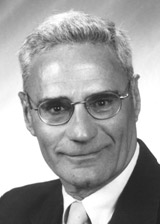
Fund Purpose:
This fund was formed to recognize the contribution of Dr. Jim Lauderdale to the field of reproductive physiology and to the American Society of Animal Science. Money from the club is used every three years to help support the Triennial Reproduction Symposium. In addition, money from this fund will now be used to support the ASAS Animal Physiology & Endocrinology Award.
Biographical Sketch:
Dr. Jim Lauderdale's contributions to our scientific community and to the animal industry are appreciated. One key scientific contribution was his leadership to develop and obtain regulatory approval for Lutalyse. Throughout his career, especially during the past two decades, Jim performed exemplary service to ASAS, including his presidency of ASAS and FASS. He generously contributed his time and talents to many individuals and companies.
Founders:
Deepest appreciation is expressed to the generous contributors and to John Chenault, Mel DeJarnette, Harold Hafs, Mike Moseley, David Patterson, and Bob Zimbelman for the success of funding this club.
Past Awards:
2025 Award Recipient: George Perry, Texas A&M AgriLife Research, Texas A&M University
2024 Award Recipient: Matthew B. Wheeler, University of Illinois Urbana-Champaign
2023 Award Recipient: Russell V. Anthony, Colorado State University
2022 Award Recipient: Dr. David J. Miller, University of Illinois at Urbana-Champaign
2021 Award Recipient: Dr. Leon J. Spicer, Oklahoma State University
2020 Award Recipient: Dr. Geoffrey Dahl, University of Florida
2019 Award Recipient: Dr. Min Du, Washington State University
2018 Award Recipient: Dr. G. Cliff Lamb, Texas A&M University
2017 Award Recipient: Dr. Andrea S. Cupp, University of Nebraska-Lincoln
2016 Award Recipient: Dr. Thomas H. Welsh, Jr., Texas A&M University
2015 Award Recipient: Dr. Michael Day, The Ohio State University
2014 Award Recipient: Dr. Thomas R. Hansen, Colorado State University
2013 Award Recipient: Dr. Thomas Spencer, Washington State University




